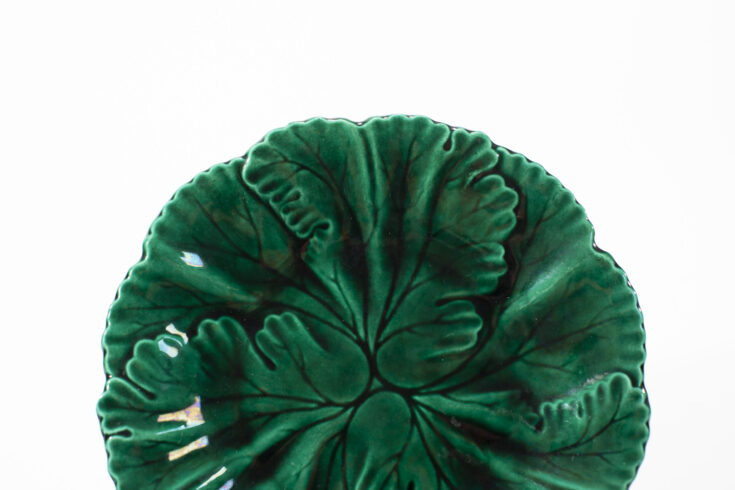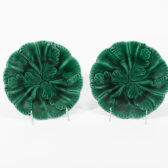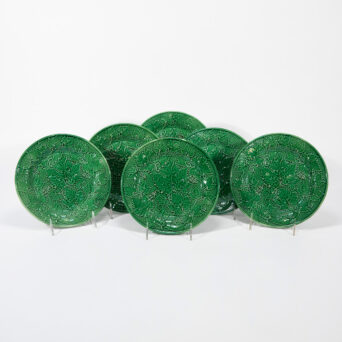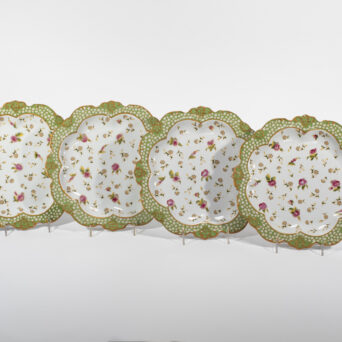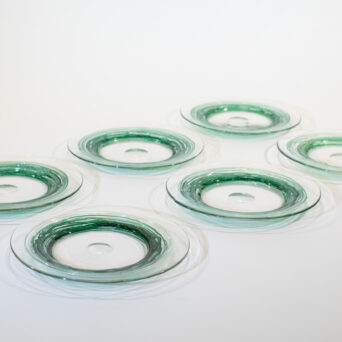
Pair of Antique Majolica Plates
The earliest examples of majolica – brightly colored earthenware – first emerged in the 1400s amid the Italian Renaissance. The use of a colorful tin glaze on ceramics was an innovation that Italian ceramic artists adapted from techniques that they observed on Spanish imports.
One often finds majolica to be used as tableware including plates, tea sets, jugs and other decorative objects. It is a type of pottery that an earthenware piece is covered with an opaque white glaze. It is then painted with either a stain or a glaze (or both) and then it is fired. Majolica makers usually focused predominately on five signature colors: cobalt blue, yellow, iron red, copper green, and purple, and a white enamel was often used for highlights. Majolica was known for its colorful and fanciful charm and many objects were designed for that purpose.
A pair of 19th century English Majolica Plates. These plates have a very vibrant green color with a design of overlapping leaves. The design entails leaves which also form a scalloped border. Whether one collects majolica or not, this pair of 19th century English plates is a wonderful example of majolica.

